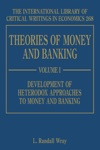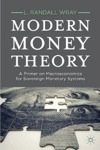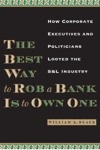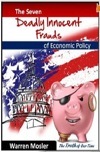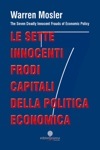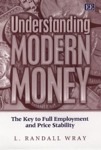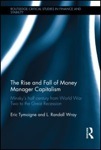Jim welcomes Professor of Economics and Law William Black to Financial Sense Newshour. He explains to Jim why no one has gone to jail four years after the beginning of the historic Credit Crisis. Professor Black believes that the level of corruption and fraud is so pervasive that very few of the guilty will ever be brought to justice.
Bill Black is an Associate Professor of Economics and Law at the University of Missouri – Kansas City (UMKC). He was the Executive Director of the Institute for Fraud Prevention from 2005-2007. He has taught previously at the LBJ School of Public Affairs at the University of Texas at Austin and at Santa Clara University, where he was also the distinguished scholar in residence for insurance law and a visiting scholar at the Markkula Center for Applied Ethics.
(Click here to listen to the interview)
Transcript
Jim Puplava: Joining me on the program is Professor William Black. He is a Lawyer and an Associate Professor of Economics and Law at the University of Missouri, Kansas City. He was a Director of the Institute for Fraud Prevention from 2005 to 2007. He taught at the LBJ School of Public Affairs at the University of Texas. He was also a Litigation Director for the Federal Home Loan Bank Board. He is also author of the book “The Best Way to Rob a Bank Is to Own One.”
And Professor, you played a critical role during the S&L crisis in exposing congressional corruption. During that period of time, a lot of corruption was exposed; a lot of people in the financial sector went to jail, including Charles Keating. I wonder if you would contrast that to the last credit crisis, let us say from 2007 to 2009 where a lot of money was lost, a lot of things went wrong, but nobody went to jail. Instead of going to jail, they walked out instead with multi-million dollar bonuses. What was the difference, what was behind this in your opinion?
William Black: Well, I say the both of them were driven by fraud. The Savings & Loan crisis was a tragedy in two parts. First part was not fraud, it was interest rate risk. But the second phase, which was vastly more expensive, was to defraud and the National Commission that looked into the causes of the crisis said that the typical large failure fraud was invariably present. And there were real regulators then. Our agency filed well over 10,000 criminal referrals that resulted in over 1,000 felony convictions and cases designated as nature. And even that understates the grade in which we went after the elite. Because we worked very closely with the FBI and the Justice Department, to prioritize cases—creating the top 100 list of the 100 worst institutions which translated into about 600 or 700 executives—and so the bulk of those thousand felony convictions were the worst fraud, the most elite frauds.
In the current crisis, of course they appointed anti-regulators. And this crisis goes back well before 2007 and of course it is continuing, it does not end at 2009. So the FBI warned in open testimony in the House of Representatives, in September 2004—we are now talking seven years ago—that there was an epidemic of mortgage fraud, their words, and they predicted that it would cause a financial crisis, crisis being their word, if it were not contained. Well no one thinks that it was contained.
All right so you have massive fraud driving this crisis, hyperinflating the bubble, an FBI warning and how many criminal referrals did the same agency do, in this crisis. Remember it did well over 10,000 in the prior crisis. Well the answer is zero. They completely shut down making criminal referrals and whichever administration you hate the most, you can hate because while most of this certainly occurred in the Bush Administration, the Obama Administration has obviously not changed it. Obviously did not see it as a priority to prosecute these elite criminals who caused this devastating injury.
Another way to look at it is, how much fraud is there and we know the following: There are no official statistics on sub prime and similar categories because there are no official definitions. So there is a little wishy-wishy in this but the best numbers we have are that by 2006, half of all the loans called sub-prime, were also liars loans. Liars loans means that there was no prudent underwriting of the loan. And total, about one-third of all the loans made in 2006, were liars loans.
Now that’s an extraordinary number, especially when you look at the studies. And here I am going to quote from the Mortgage Bankers Association. That is the trade association of the perps and this is their Anti-Fraud Specialist Unit, and they reported this to every member of the Mortgage Bankers Association in 2006. So nobody can claim they did not know. They found three critical things, first they said this kind of loan where you do not do underwriting is, and I am quoting again, “an open invitation to fraudsters.” Second, they said “the best study of this found a 90% fraud incident.” In other words, if you look at 100 liars loans, 90 of them are fraudulent. And third they said, therefore these loans where the euphemism is stated income are Alt-A loans, actually deserve the title that the industry calls the Behind Closed Doors, and that is liars loans. The other thing we know from other studies and investigations, is that it was overwhelmingly lenders and their agents that put the ‘lie’ in liars loans. Now that is obvious when you look at the lies about appraisals, because homeowners cannot inflate appraisals. But lenders can and how they did it was shown in an investigation by then New York Attorney General Cuomo, now Governor, who found that Washington Mutual, which is called WAMU, and is the largest bank failure in the history of the United States, and indeed the history of the world, had a black list of appraisers. But you got on the black list if you were an honest appraiser, and refused to inflate the appraisal.
Similarly, we know that you could get, for example, a California jumbo mortgage, that’s one say the size of $800,000. As a loan broker, just one of these, you could get a fee of $20,000. If it hit certain parameters. And those parameters would have to do with what is the interest rate, but also what is the loan to value ratio, and what is the debt to income ratio. So the loan to value ratio is how big is the loan compared to the value of your house. Well that is an easy ratio to gimmick, and we have just explained why, by inflating the appraisal. If you inflate the appraisal then the loan to value ratio falls and the loan looks like it is a lot safer, and you can sell it to Wall Street for significantly more. The debt to income ratio, well that is even easier to gain. The debt is simply how much are you going to borrow to buy the house. And the income is, what is the income stated on the loan application for the borrower. Except that this is a liars loan, so the lender has agreed that it is not going to check. It is not going to verify whether the income is real. And so the loan broker can write down any income number he or she wants. And that will gimmick that ratio and again it will put it into the sweet spot, for all of these things, so that you could get your $20,000 fee. Now step back and ask yourself, many of these guys who are loan brokers, their previous job was literally flipping burgers, right. So are you going to leave it up to the borrower to come up magically with the right income and the right appraisal when they don’t even know what the magic numbers are and cannot inflate the appraisal? Of course not. You are going to do it as the loan broker. You are going to tell the borrower to write in a greatly inflated income number, or maybe you are afraid that they are too honest, so you may simply write it in yourself, which happened in many cases.
So again, we got thirty, roughly one-third of all the loans by 2006, after these warnings. They rapidly increased the number of liars loans they made. One-third of them are liars loans and 90% of them are fraudulent, which is to say, that the amount of fraud annually was well over a million fraud a year. We are talking about hundreds of billions of dollars in fraudulent instruments.
Jim Puplava: Professor, I guess one question I would have is, did the guys at the top of the bank not know that this was going on? I mean I would find it hard to believe that if I am the CEO of a financial organization, that I don’t know that our loan standards, that we went to liar loans and that we were not documenting or verifying. I mean what happened to 20% down, two years worth of tax returns, I mean how would somebody at the top, not know this.
William Black: You mean you think liars loan might be a hint?
Jim Puplava: Yeah, maybe just a little (sarcasm).
William Black: Yeah, we have known for centuries, that if you don’t underwrite loans, or if you don’t underwrite insurance, you’ll get something called “adverse selection”. And that means you get the worse possible borrowers or people being insured and the expected value of lending to somebody, in conditions of serious adverse selection, is negative. Or to put that in English, that means if you lend this way, you lose money. And we have known this for centuries. This is like betting against the house in Las Vegas. You could win some individual bets, but you stay at the table for three years, and you are going to lose everything. And as we say, you will lose the house, to the house. And, that is exactly what is going to happen here. So yeah, the CEO’s knew all about this. Why did they do it? And the answer is, here is the recipe, it’s got four ingredients for creating what the Nobel Prize Winner in Economics, George Akerlof and his colleague Paul Romer said in 1993 was “a sure thing”. And that sure thing is what in criminology we call accounting control fraud.
So control fraud is when the person who controls a seemingly legitimate entity, uses it as a weapon to fraud. In the financial sphere, the weapon of choice is accounting. So here are the four ingredients of the recipe that produce a sure thing of record accounting income.
- Grow like crazy
- Make preposterously bad loans but at a premium yield.
- Have extreme leverage. That means you have a ton on debt.
- Put aside only ridiculously low allowances for future loan losses.
You do those four things, you are mathematically guaranteed to report record, albeit fictional, profits in the short term. You are also guaranteed with modern executive compensation, to make the Senior Executives wealthy, and you are guaranteed, because after all, if you think about those four ingredients, they are the perfect recipe as well for maximizing real losses. And that’s why the title of Akerlof and Romer’s article says it all, “Looting: The Economic Underworld of Bankruptcy for Profit.” The firm fails but the executives walk away rich. This is the same concept with my book “The Best Way to Rob a Bank Is to Own One.” It is these internal people who control the seemingly legitimate entity that can get away with financial murder. And here is the really bad news. I mean that is bad news right there, but the really bad news, is that this tends to happen as the FBI warned, and again in 2004, seven years ago. So the next time you hear some moron tell you that no one could have predicted this, it was predicted by the Premiere Law Enforcement entity in the world dealing with white-collar crime.
Jim Puplava: You know, we just talked about, with these liar loans being made, the executives at the top knew that this was going on. But it was driving record profits that they were reporting, their stock prices were going up. They were getting paid bonuses and you know their option values were worth just, you know, some of these compensation packages were just unreal. But here’s the thing that I guess some of these people did know as we mentioned the executives at the top, but some knew how to make profit from them. For example, we found out in congressional testimony that Goldman Sachs at the same time that they were selling these mortgage polls to let’s say many of it’s customers, at the same time, internal memos and e-mails said the stuff was garbage and they were shorting it, making money. Is it because they control so many of Congress that this time there was no law enforcement by the regulators coming in and looking at these guys that walked away with these bonus packages. Or the fact that you had conflicts of interest of selling bogus mortgage polls that you knew that were garbage. And at the same time you were selling them to a customer, you were taking the opposite side of the trade and shorting it.
William Black: So to just close the loop on what I was saying, if a bunch of folks follow the same strategy at the same time, they hyper-inflate a financial bubble. And when you have huge financial bubbles and they collapse, that’s when you get great recession. So your question is, so why, this is the greatest financial crime in the history of the world and no one senior, at any of the major places that drove the crisis, has gone to jail? In fact, no one has been indicted. There were some at Bear Stearns, for the real specialized stuff, but for the basic fraud we are talking about, no one has even been charged with a crime. What has happened? And the answer, the first answer is it all has to start with the regulators. The regulators have to serve as the Sherpas on something like this, in criminal prosecution. The Sherpas of course, are the folks that help you get to the top of the Himalayan Mountains. And this is a hard task, it is hard to prosecute sophisticated white-collar crimes, and they do have the best criminal defense lawyers in the world. So it is not an easy thing. And getting those thousand plus felony convictions in the Savings and Loan crisis, was a massive success for which the Department of Justice, the FBI and the agencies deserve a lot of credit. What do the Sherpas do? The Sherpas do two functions. One, they do the heavy lifting and in this context, that means they the great bulk of the investigative work. And two, they serve as the guides, they have the expertise, they’ve seen this before, they know what works and what does not. And in this context, that means they have expertise in the fraud mechanisms, the fraud schemes, identifying it and explaining it. And so a criminal referral is not just a sort of a useful thing, it is the absolutely essential thing. Criminal referral in our era might be twenty to thirty pages and have two hundred to three hundred pages of attachments of all the key documents. It would be the roadmap to continue this metaphor that says, here’s the fraud, here’s how it works, here are the key people, here is where the money moved, here are the key documents to be able to prove the case. Here are the key witnesses, this is how you contact them, right? And I told you that we went to zero criminal referrals from well over ten thousand. That has made it impossible for the FBI and the justice department to have any substantial success. But of course, this is not the question of them simply not having substantial success, they ain’t having no success. And there you have to look at what, after a brilliant start with this September 2004 warning, with no help from the regulators, well you could not get any significant number of FBI agents assigned in the Bush Administration, to investigate these cases.
Now part of what has happened is in some sense understandable, when the 9/11 attacks ten years ago occurred, we of course found that our national security FBI agents, could not infiltrate Al Qaeda. So what we could do is follow the money. And the experts at following the money are the white-collar FBI agents. So they transferred 500 white collar FBI Specialists, over to National Security. Okay, we can understand why they do that. What you cannot understand is why the Bush Administration refused to allow the FBI to replace this enormous loss of white-collar specialists. And so as a whole, white collar prosecutions fell significantly in the Bush Administration. That meant that as recently as fiscal year 2007, there were nationwide, only 120 FBI agents working all mortgage fraud cases. To give you a comparison, at the peak of the Savings and Loan Crisis, there were 1,000 FBI agents working the cases.
Jim Puplava: Wow
William Black: Eight times more FBI agents than were working the cases in fiscal year 2007. And this crisis is forty times bigger and worse than the Savings and Loan Crisis. So you would have required massively more people. To give you another idea of scope, to investigate Enron, and Enron was complex, but it was nowhere near as big and as complex as Washington Mutual. It took 100 FBI agents. So you can see that with 120 nationwide, at most you could have done one major case. But instead, they divided them up in what the military would call, Penny Packets, which is to say two or three agents per field office. And that means they cannot investigate anything substantial. So they were put on relatively smaller cases. And they being diligent FBI agents, they worked those cases, and that’s where they wrote the memos, okay we found this, prosecute these people, don’t prosecute these people. The FBI in late 2007 – 2008, figures out this cannot work. Remember I told you there were over a million cases of mortgage fraud a year and that overwhelmingly it’s lenders who foot the fraud, the lie in the liars loan. But the FBI couldn’t and didn’t investigate any of the major lenders. So it is looking at these relatively small folks, and that is what it reports back. The FBI decides you know, as I said, this cannot work. This is like going to a beach in San Diego and throwing handfuls of sand in the Pacific Ocean and wondering when you are going to be able to walk to Hawaii. Every year, with a million plus cases of fraud a year, if you prosecute a thousand of them or two thousand of them or three thousand of them, you are a million cases further behind every year, right. It is just insane. So the FBI says we got to start going after the big guys at which point Bush’s Attorney General Mukasey says no, he refuses to even create a National Task Force against mortgage fraud, saying famously, this is simply the equivalent of, and I am quoting again, “White Collar Street Crime,” little tiny stuff. Well of course he has assigned the FBI to only look at little cases and they report back, hey we’re finding little cases. And the Mukasey interprets from that, hey only little cases exist.
Jim Puplava: Yeah, but you know, in the S&L Crisis, you had some high profile cases. For example Charles Keating, and that got a lot of play. So maybe if they didn’t have the manpower, maybe going after some very high profile cases, might have made the point. You are saying they backed off from that. What about the Obama Administration?
William Black: They never did it. They didn’t even back off. They never, you can tell from the numbers that they have, in how many FBI personnel it takes to do a really sophisticated, large institutional investigation. They have never done what would have been considered a real investigation in the Savings and Loan era of any, any of the major fraudulent lenders and investment banks that created the worthless financial derivates—not worthless, but not worth very much—financial derivatives.
Jim Puplava: What about the Obama Administration? Had they came in, they continued with the same policy basically, they ignored it. Where they could have had let us say, an opportunity. Is it because Professor, that the process is you know, some have said that Congress is bought and paid for by the financial industry. I mean, is that part of the reason?
William Black: Well, it’s not just Congress of course. The President has said that he wants to raise a billion dollars in the reelection effort and despite all the press you may have heard about how the White House is despised by finance—in fact, last I read, a bigger percentage and a bigger absolute dollar amount of contributions in this effort, than in the original effort had come from finance. And so both parties are tremendously beholden to finance. That is part of it but again, the Obama Administration was better than the Bush Administration. The Obama Administration was willing to create a task force and it’s the numbers of FBI Agents have been increased, but they are still looking at relatively small cases. And they are nowhere near the numbers required and so unless something dramatic or radical changes, this is going to be the greatest case of elite fraud with impunity in the history of the world. And it is only going to change if we express our outrage as the people and demand that it is changed. Let me tell you how bad it is. The Federal Housing Finance Administration, has just last week, or about ten days ago now, filed fifteen hundred plus pages of complaints against seventeen financial entities. And about ten of them are among the biggest financial entities in the world saying, every investigation has found repeated enormous fraud at these entities. So, and there is a track record, a paper trail of that fraud. But these entities got reports saying these assets were trash and that they lied and then sold the assets to Fannie and Freddie by making acts of deceit, which is of course, the key element of fraud.
So, now that this has happened, there are really only two possibilities. Either the Federal Housing Finance Administration has gotten all those documents wrong, and there is no such record, or there is such a record in which case, where is the Justice Department, why is it not bringing criminal prosecution against most of the largest banks in the world.
Jim Puplava: You know, there was a documentary film called “Inside Job,” which won an Oscar this year, and it ended with the Director and Producer pointing out the fact that you just brought up—not one single prosecution was brought in this entire situation, what is probably the largest fraud committed in history. And yet it still goes on Professor, we still have the financial industry contributing large amounts of money to politicians in both parties, both at the national level, the local level, and so basically, what you have is influence buying here. Because it seems to me that there were so many obviously cases, even in the hearings, where I think it was, Senator Levin, basically talking about the conflicts of interest in internal e-mails. I thought my goodness, there was enough evidence to go after but not one thing was done. And even when a lot of these firms went under, as the shareholders lost everything, the taxpayers losing everything, the guys at the top walked away with some of the biggest bonus packages I’ve seen in my investment career.
William Black: Again, Akerlof and Romer have been proven correct. Akerlof and Romer worked with us and strongly support the kind of efforts that need to be done. The title of their article again is “Looting: The Economic Underworld of Bankruptcy for Profit.” The firm failed because you followed the fraud recipe that I gave you, which causes catastrophic losses but their CEO’s and other Senior Officers can walk away incredibly rich. There is, by the way, one case and was done after the movie, the documentary that you are talking about, and it’s the proverbial exception that proves the rule. The Taylor case, and it refers to a pretty obscure mortgage-banking firm in the southeast. Ten people have been convicted who were officers. But the only reason they were convicted was because these people after thousands of acts of fraud, over a ten-year period, tried to defraud the TARP Program and the Special Inspector General to the TARP Program, which is called SIGTARP, was very good. He has since left the government service. And they found this and they made the criminal referral. What we discovered in the course of that, was that Fanny Mae discovered this fraud in 2000 but refused to make a criminal referral.
They refused to make a criminal referral because it wanted to secretly dump the paper that had been provided by this mortgage-banking firm. And so the mortgage banking firm, the fraudulent mortgage banking firm, they would have been caught red handed doing the frauds. Simply went across the street, metaphorically, and defrauded Freddie Mac for nine years. So again, if people, I do not understand who have never done this, how absolutely critical the criminal referrals are.
Jim Puplava: Well, it seems like as we have seen here, as you pointed out, zero criminal referrals have been brought in this entire case, and you just cannot help but believe that this goes on and meanwhile, you and I as taxpayers, are going to have to front the bill for this. It is unfortunate. Let me ask you a final question, we supposedly as a result of all of this, we had Dodd Frank, that was supposed to bring in like Sarbanes-Oxley, all this financial legislation that would basically prevent this kind of thing from happening again. Will Dodd Frank help us in this way or is it just more red tape and which is useless if regulators and let’s say the FBI, aren’t allowed to do their job.
William Black: Dodd Frank has some individual components that are useful and the Republican Party unfortunately is trying to kill each of them. The Administration is not necessarily fighting strong for any, the Dodd Frank Bill was not created and designed to deal with the actual causes of the crisis. And so it most likely will not stop the next crisis. But the focus on legislation is a bit misleading. Under the existing laws and regulation, this was an easy crisis to prevent. People think of it as much more difficult and complex. But as I say, it was overwhelmingly driven by liars loans. Liars loans were easy to figure out. We, as regional regulators in 1990 and 1991, killed a wave of liars loans that was starting, especially in Orange Country Savings and Loans. And as a result, those lenders gave up their Federal Deposit Insurance precisely to escape our jurisdiction, and created mortgage banks. But the Fed, the Federal Reserve Board, had authority from 1994 on, in other words, a long time before the crisis, to regulate anybody that did home loans. And it was an easy call that something called a liars loan had to be stopped. Alan Greenspan and Ben Bernanke refused to do their statutory authority to stop them. Because they didn’t believe in regulation. Bernanke was reappointed by President Obama. You know, I tried as little, what one little person could, to stop that. We need to have a complete new crew. Geithner needs to go, Attorney General Holder needs to go, and Bernanke needs to go and we need to put people in who will make a high priority ending the ability to loot institutions with impunity.
Jim Puplava: Yeah, that was one of the aspects that was brought out in the documentary, “Inside Job.” A lot of the people, Larry Summers who until recently was in the Obama Administration, Geithner, Alan Greenspan tried to stop Brooksley Born on derivatives. And it seems like the guys that were behind all of this are the same people that have been put in charge of fixing it. Well listen Professor, your book once again is “The Best Way to Rob a Bank Is to Own One.” And you have written several articles so if our listeners would like to follow the work that you do, I hope you keep up the good work because we do need hopefully some day we will get honest people in there that will care more about doing what is right than about their positions and the pay that they get.
William Black: We have written hundreds of articles that if folks are interested, check out “New Economic Perspectives”, the UMKC Economics blog.
Jim Puplava: Okay, one more time?
William Black: “New Economic Perspectives”, the blog of the Economics Department at the University of Missouri at Kansas City.
Jim Puplava: All right, well we have been speaking with Professor Black, Professor thank you for coming on the program and helping to clarify why this big crime really went unpunished, which is a real tragedy for not only most Americans but all of us as taxpayers who have paid for the bill.
William Black: Thank you sir, take care.
Jim Puplava: Thank you.


